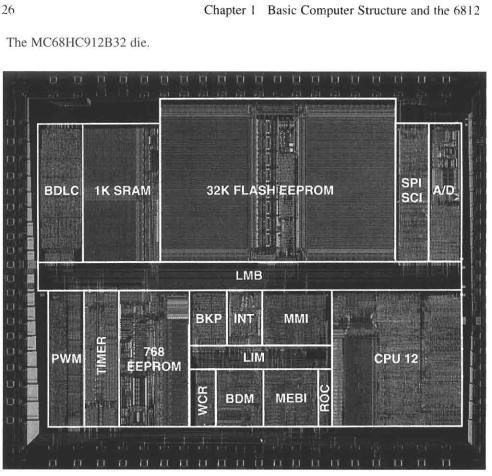
- •Acknowledgments
- •About the Author
- •1.1 Basic Computer Structure
- •1.3 A Few Instructions and Some Simple Programs
- •2 The Instruction Set
- •3.1 Op Code Byte Addressing Modes
- •4.2 Assembler Directives
- •4.3 Mechanics of a Two-Pass Assembler
- •4.6 Summary
- •5.1 Cross Assemblers and Downloaders
- •5 Problems
- •6.3 Passing Arguments by Value, Reference, and Name
- •7 Arithmetic Operations
- •7.2 Integer Conversion
- •8 Programming in C and C++
- •8.1 Compilers and Interpreters
- •9 Implementation of C Procedures
- •9.2 Expressions and Assignment Statements
- •9.4 Loop Statements, Arrays, and Structs
- •10 Elementary Data Structures
- •10.1 What a Data Structure Is
- •11.4 Synchronization Hardware
- •12.4 The 68300 Series
- •A2.1 Loading HiWare Software
- •A2.2 Opening the HiWare Toolbox
- •A2.3 Running Examples From the ManualProgramFolder
- •A2.6 POD-Mode BDM Interface
- •Index
8 |
Chapter 1 Basic Computer Structure and the 6812 |
1.3 A Few Instructions and Some Simple Programs
Now that we have examined the instruction from static and dynamic points of view, we will look at some simple programs. The machine code for these programs will be described explicitly so that you can try out these programs on a real 6812 and see how they work, or at least so that you can clearly visualize this experience. The art of determining which instructions have to be put where is introduced together with a discussion of the bits in the condition code register. We will discuss what we consider to be a good program versus a bad program, and we will discuss what is going to be in Chapters 2 and 3, We will also introduce an alternative to the immediate addressing mode using the load instruction. Then we bring in the store, add, software interrupt, and add with carry instructions to make the programs more interesting as we explain the notions of programming in general.
We first consider some variations of the load instruction to illustrate different addressing modes and representations of instructions. We may want to put another number into register A. Had we wanted to put $3E into A rather than $2F, only the second byte of the instruction would be changed, with $3E replacing $2F. The same instruction as
LDAA #$3E
could also be written using a decimal number as the immediate operand: for example,
LDAA #62
Either line of source code would be converted to machine code as follows:
We can load register B using a different opcode byte. Had we wanted to put $2F into accumulator B, the first byte would be changed from $86 to $C6 and the instruction mnemonic would be written
LDAB #$2F
We now introduce the direct addressing mode. Although the immediate mode is useful for initializing registers when a program is started, the immediate mode would not be able to do much work by itself. We would like to load words that are at a known location but whose actual value is not known at the time the program is written. One could load accumulator B with the contents of memory location $0840. This is called direct addressing, as opposed to immediate addressing. The addressing mode, direct, uses no pound sign "#" and a 2-byte address value as the effective address; it loads the word at this address into the accumulator. The instruction mnemonic for this is
LDAA $0840
and the instruction appears in memory as the three consecutive bytes.


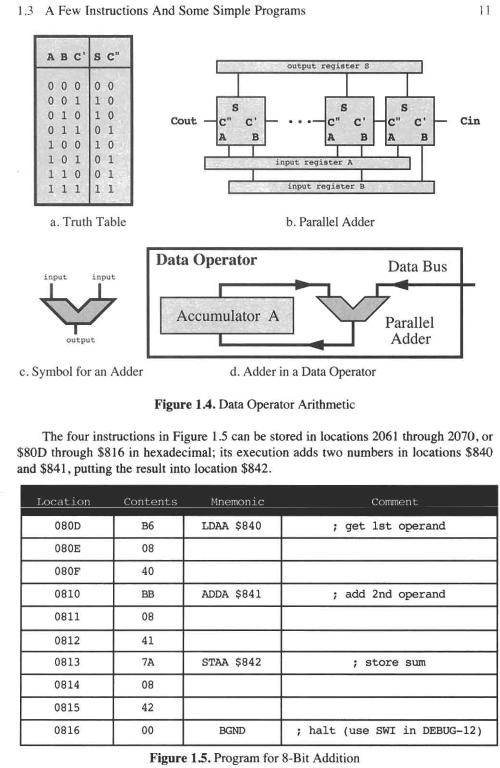
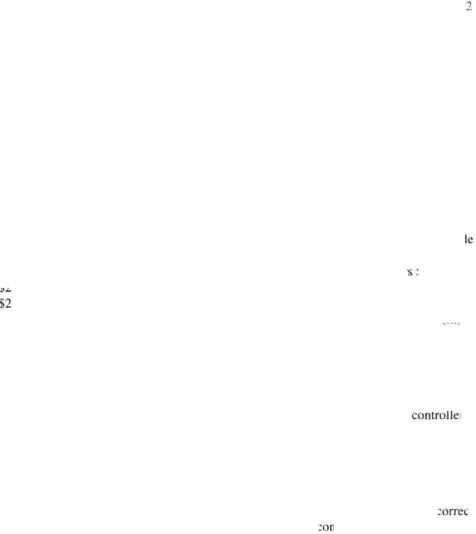

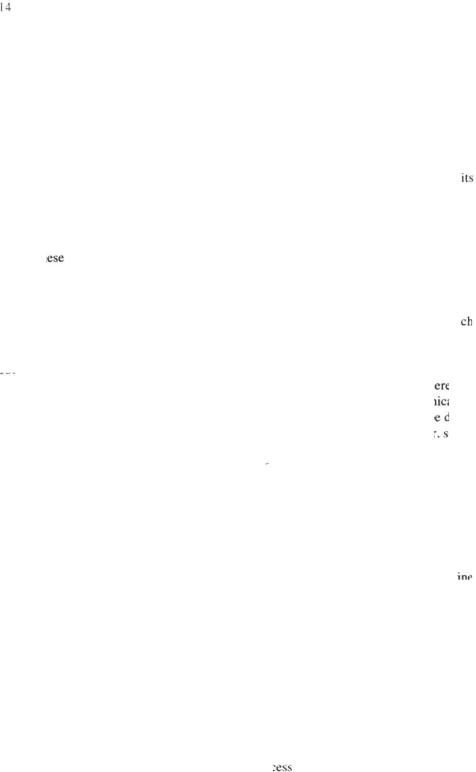
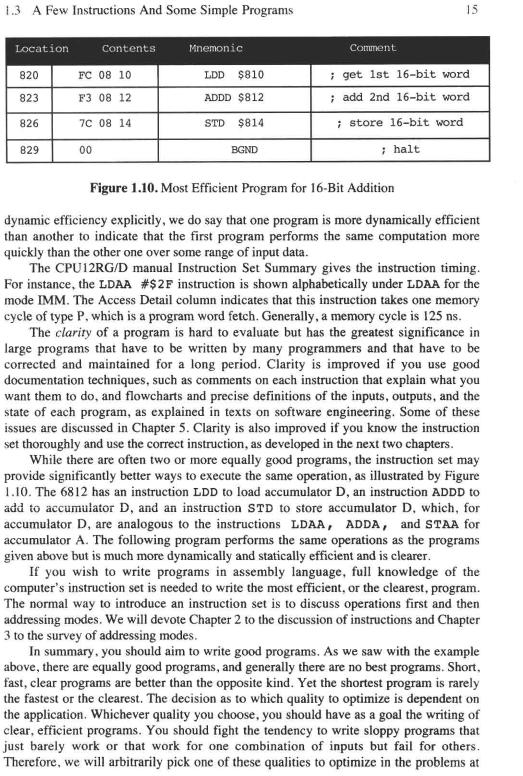
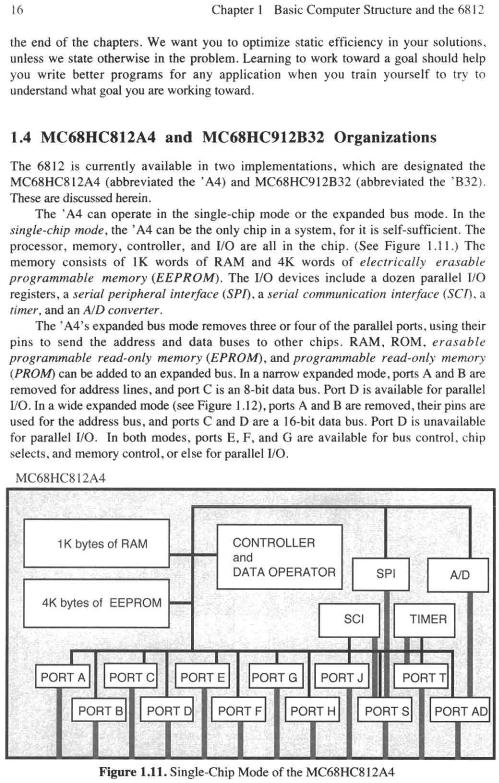
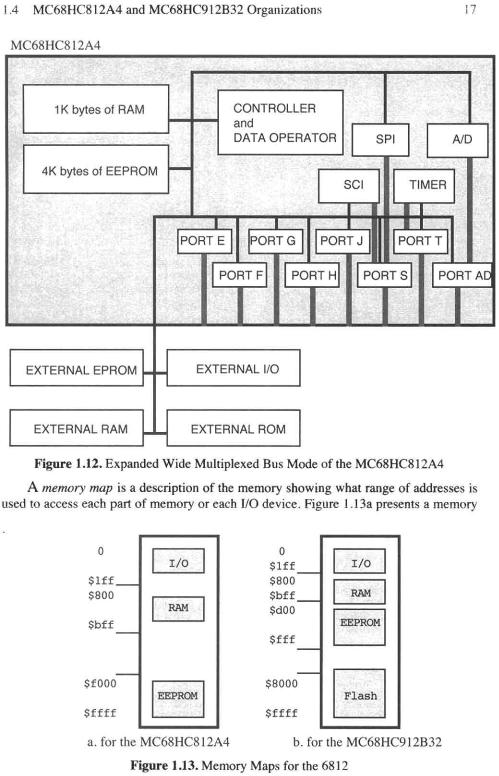
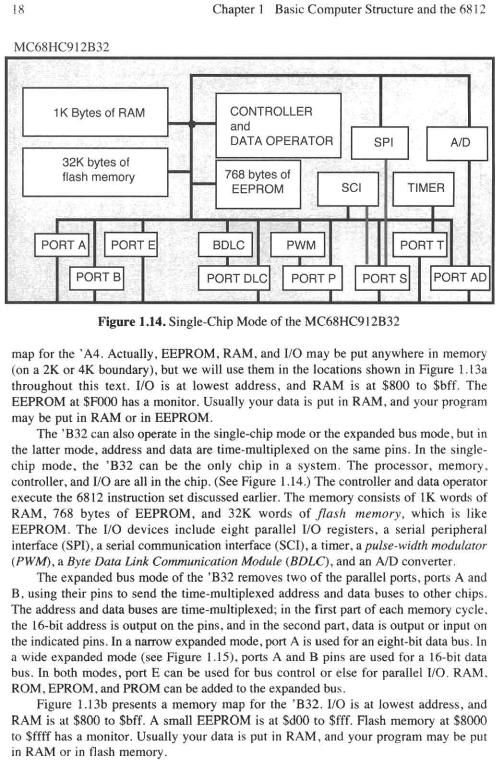
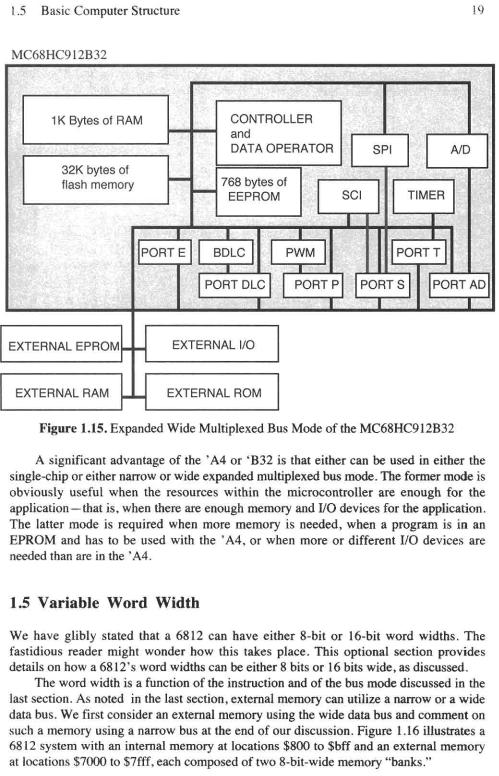
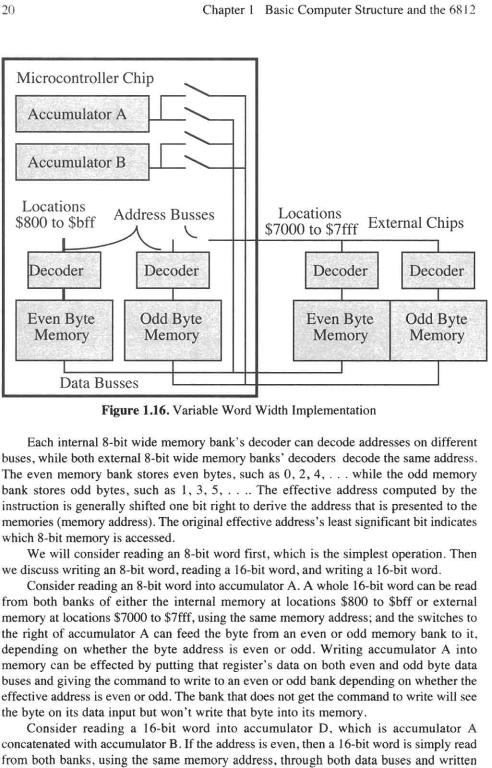
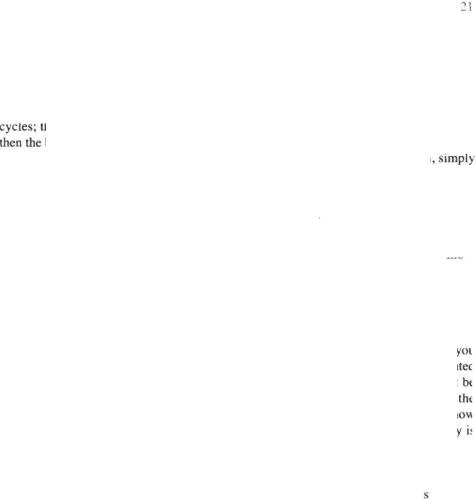




PROBLEMS |
25 |
20. In Figure 1.16, an internal memory is 16 bits wide, while the older 6811 microcontroller's internal memory is 8 bits wide. A word of EEPROM can be programmed each 10 milliseconds in either case. How long does it take to write a I Kbyte program in EEPROM in each microcontroller?
